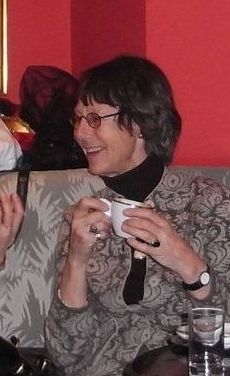Chemistry teacher Lida Schoen recounts the teaching experiences that have influenced her interest in CLIL and provides an overview of bilingual education in the Netherlands.
 |
Tell us a little about yourself…
Although I don't have any formal education in English, except for secondary school, and no CLIL teacher training, I thoroughly enjoy teaching in English. I’ve learned how to teach in English by doing it.
After leaving secondary school, I worked for Shell Research in Amsterdam as a technician. My colleagues were trainees from all over the world and I couldn't understand them, mainly due to their accents. I knew quite a few Shakespeare sonnets by heart, had read nearly all Oscar Wilde’s plays, but couldn't talk, not about chemistry and not socially.
So I decided to find myself a job in the UK as an au-pair in an old people’s home (this was the only way for me to get a work permit). The whole world opened up to me after that! I started studying chemistry in Amsterdam and ‘sold’ my organic chemistry lecture notes to my fellow students for a beer in town. (The lecturer was a professor from India with quite a strong Indian accent!) Since my time at Amsterdam University the international language of science, and of world communication, has become English.
So what’s the situation with bilingual education in the Netherlands?
At the moment, with the Dutch language being the best kept secret in the world, the Netherlands hosts around 100 higher-level bilingual secondary schools (TTO) out of a total of 1551. Nearly all of these are Dutch-English schools in which half of the subjects are taught in English. However, all students are required to pass their final (central) exam in Dutch. Generally speaking, textbooks from English don’t apply to the Netherlands context. Oddly, even here textbooks translated from Dutch into English are published.
There also exist a number of schools for vocational and professional education, preparing students to work, for example, in the hospitality and tourist industry (MBO). There are also a few primary schools offering bilingual education, often for English-speaking expat children, who get extra lessons in Dutch.
In all schools English is compulsory from primary age on.
When did you first start teaching in English?
My first teaching experience in English started at Amsterdam Teacher Training College, where we started exchanges with teacher training colleges abroad, preparing for a united Europe. We prepared presentations, demonstrations and a whole trip in English and rehearsed it until everybody was happy.
During the exchange students really found that 'the proof is the pudding', they thoroughly enjoyed the exchange we did with Norway. I was always amazed at how easily (although with many mistakes) the students communicated in English. I realised that foreign language methodology must have changed a lot since my school days! Of course the everyday lives of students has changed dramatically; they are now exposed to English through English/American-orientated TV programmes (in the original language, usually subtitled) and computers.
Are you involved in any CLIL projects at the moment?
I am involved with The Young Ambassadors for Chemistry (YAC); this is a project from the World Chemistry Organisation (www.iupac.org/web/ins/050) and the Science Across the World programme (www.scienceacross.org). Its mission is to promote chemistry around the world. It was devised, organised and implemented by myself and Keith Kelly. Both of these global programmes need English as the language of communication. We teach teachers and students in non-English speaking (developing) countries with a view to them becoming ambassadors for chemistry. It’s wonderful to have English as our common language for communication and teaching.
Despite having no formal CLIL education as such, I’ve realised that native-speaker students must also face the challenge of learning a great deal of ‘subject jargon’ which is often like a second language to them. ‘Subject jargon’ can be completely different from 'normal' language and can be quite confusing to students. When I teach in Dutch I pay attention to this 'second language' to help students to master it. I also help them use the new words, phenomena and principles in different contexts. In class we produce dictionaries with subject jargon and exercises with substitution tables to help with this.
Teaching in English doesn't actually make a lot of difference regarding subject jargon. The difference is felt more as regards the language of communication. In English students often need help with communicating in English. There is a need for well-structured group work here, underlined by sound methodological principles as regards teaching science in English.
In a recent YAC project we did students were asked to produce cosmetics (names of chemicals and 'chemical' procedures) in a public place. After the production of a new line of cosmetics they then have to 'sell' their results to the public. It is really helpful to simultaneously teach them about the language of marketing, phrases like 'May I have your attention ladies and gentlemen' or 'This next product represents an unbelievable opportunity…'
Anything else you’d like to say about the future of CLIL?
I am completely familiar with the methodology of Science teaching but much less familiar with language teaching methodology. As a scientist I would like investigate this further and, while I am sure a lot of research has already been carried out, it will be the next generation of teachers who can take advantage of the CLIL research being done now! But we must remember that all CLIL teachers must be trained to be good teachers.
Thanks Lida - all the best in your future teaching!
Your perspectives
- 1
- 2
- 3
- 4
- 5
- 6
- 7
- 8
- 9
- 10
- 11
- 12
- 13Currently reading
CLIL in the Netherlands: Interview with Lida Schoen
- 14
- 15
- 16
- 17
- 18
- 19
- 20
- 21
- 22
- 23


No comments yet